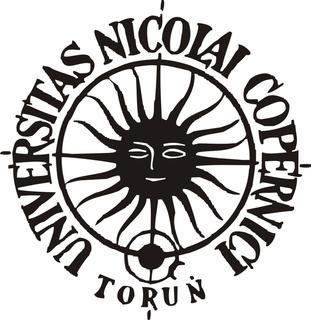Affiliation EUA, Socrates-Erasmus Total enrollment 30,835 (30 Nov 2010) Founded 24 August 1945 | Established 24 August 1945 Students 30,835 (November 2010) Phone +48 56 611 40 10 | |
 | ||
Rector Professor Andrzej Tretyn Address Jurija Gagarina 11, 87-100 Toruń, Poland Notable alumni Similar Kazimierz Wielki University, Adam Mickiewicz University, University of Warmia and Mazu, University of Warsaw, University of Gdańsk Profiles | ||
Nicolaus Copernicus University in Toruń (Polish: Uniwersytet Mikołaja Kopernika w Toruniu, UMK) is located in Toruń, Poland. It was named after Nicolaus Copernicus who was born in this town in 1473.
Contents
- Tomasz f de rosset nicolaus copernicus university in toru
- The beginnings of higher education in Toru
- Faculties
- Levels of study offered by institution
- Diplomas and degrees
- International cooperation
- Notable alumni
- References
Tomasz f de rosset nicolaus copernicus university in toru
The beginnings of higher education in Toruń
The first institution of higher education in Torun, the Toruń Academic Gymnasium was founded in 1568 on Piekary street. It was one of the first universities in northern Poland. The Academic Gymnasium was the precursor to scientific and cultural life (including the first museum created in 1594) in the region. Thanks to the efforts of Heinrich Stroband, city mayor in 1594, academics in Toruń received good working conditions for teaching and research. Among his professors in the seventeenth and eighteenth centuries were meritorious scholars of Polish and Prussian history, authors of textbooks and papers from various disciplines of humanities, and associates scientific journals.
The establishment of the university in a modern form began in the nineteenth century. During the partitions of Poland the Prussian government planned to create a University of Theology, which was to include faculties of law and economics, unfortunately this project did not materialise.
In the interwar period the city authorities of Toruń again sought to establish a university. Soon after the annexation of Pomerania to the reborn Poland in 1920, a new phase of efforts to develop the university began. Even before 1920 the Supreme People's Council had considered the proposal to establish higher educational institutions in the Polish territories annexed by Prussia at the University of Gdansk and in Toruń. However, political developments and the uncertain future of Pomerania prompted the council's leadership to accept the December 1918 resolution of the Sejm to overlook Toruń as a location for a new university and instead go ahead with the development of a university in Poznań.
In 1920, the first declaration requesting the establishment of a university was put forward in November by the National Workers Party whose members chose Toruń-born Nicolaus Copernicus to be the patron of the University. For this purpose a number of educational societies, such as the Baltic Institute (later transferred to Gdynia, and then to Gdańsk) amongst others, were established in the town.
Finally in 1938 it was decided to set up the Nicolaus Copernicus University in Toruń as a subsidiary of Poznań's Adam Mickiewicz University; work was to start at the beginning of 1940. This program, however, was interrupted by World War II. It was not until 1947, (two years after the creation of the Nicolaus Copernicus University) that prof. Karol Gorski revealed that before the outbreak of World War II there was an approved plan to open Poznań University long-distance division in Toruń in 1940, to teach the humanities and theology.
